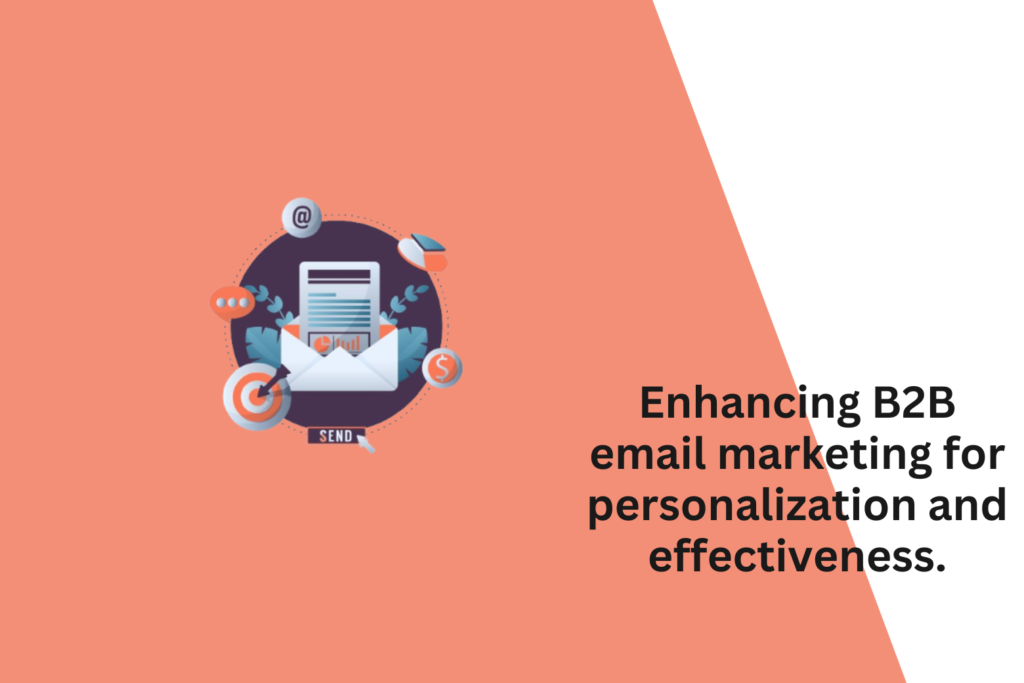
To optimize your email marketing strategies and deliver more personalized and effective messages to B2B clients, consider the following best practices:
- Segment Your Email List:
- Divide your email list into segments based on factors such as industry, company size, job role, or previous interactions with your content. Segmentation allows you to send more targeted and relevant messages.
- Personalization:
- Use personalization tokens to include the recipient’s name in the email. Additionally, tailor your email content to address the specific needs and pain points of each segment.
- Behavioral Trigger Emails:
- Set up automated emails triggered by user behavior, such as downloading a resource or visiting a particular webpage. These emails can be highly relevant and timely.
- A/B Testing:
- Experiment with different subject lines, email copy, visuals, and calls to action (CTAs) to identify what resonates best with your B2B audience. Use A/B testing to refine your email campaigns.
- Mobile Optimization:
- Ensure that your emails are mobile-friendly since many professionals check their emails on mobile devices. Use responsive design to adapt to different screen sizes.
- Clear and Compelling Subject Lines:
- Craft subject lines that are concise, intriguing, and relevant to the content of your email. Avoid spammy or clickbait language.
- Valuable Content:
- Offer valuable, educational, and actionable content in your emails. Content that addresses the needs and challenges of your B2B clients is more likely to be opened and read.
- Clear CTAs:
- Clearly define what action you want recipients to take and include a compelling CTA. Make it easy for them to respond.
- Email Timing:
- Send emails at times when your target audience is most likely to be checking their inboxes. Experiment with different days and times to find the optimal schedule.
- Personalized Recommendations:
- Use data to provide personalized product or service recommendations, similar to how e-commerce platforms recommend products to users.
- Educational Drip Campaigns:
- Develop drip campaigns that deliver a series of educational content pieces over time. This helps nurture leads and establish your brand as a valuable resource.
- Social Proof:
- Include testimonials, case studies, or industry recognitions in your emails to build credibility and trust with B2B clients.
- Compliance and Privacy:
- Ensure compliance with data privacy regulations like GDPR and include clear opt-out options in your emails.
- Feedback Loops:
- Encourage feedback from recipients to understand what they find valuable or what could be improved in your email content.
- Data Analysis:
- Regularly analyze email performance metrics such as open rates, click-through rates, conversion rates, and unsubscribe rates. Use this data to make data-driven decisions and improve your strategies.
- Email Deliverability:
- Keep a clean email list by regularly removing inactive or bouncing email addresses. Monitor email deliverability and address any issues that may affect your sender reputation.
- Email Authentication:
- Implement authentication protocols like DKIM and SPF to improve email deliverability and reduce the likelihood of your emails ending up in spam folders.
- Automated Lead Scoring:
- Implement lead scoring based on interactions with your emails. This helps your sales team prioritize the most promising leads.
- Multichannel Integration:
- Integrate your email marketing efforts with other marketing channels for a cohesive and consistent user experience.
- Continuous Learning:
Stay informed about email marketing trends and technologies to adapt and improve your strategies over time.



